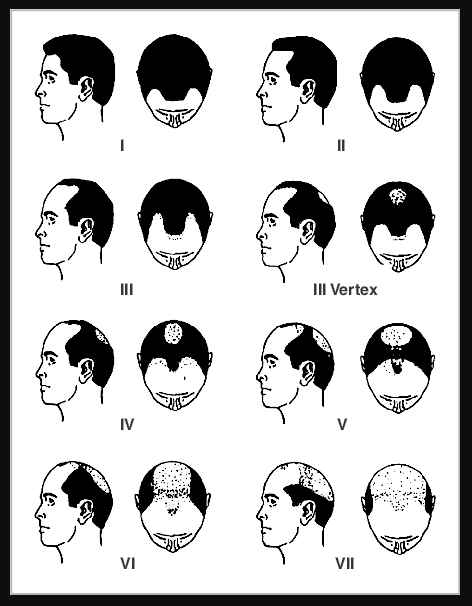
Male Hair Loss
Hair Loss in Men
It’s a fact that most men will experience hair loss at some point in their life, with male pattern hair loss beginning as early as puberty ends. Male patterned hair loss is a progressive condition, and the prevalence of male pattern baldness only increases with age. An estimated 20% of men in their twenties have noticeable hair loss. This number rises to 66% by age 60 and is estimated to be more than 80% for men in their 8th decade. Male pattern hair loss tends to be the most active between the ages of 20 and 50.
Genetic hair loss, also known as androgenic alopecia, is estimated to be responsible for more than 95% of male balding. Due to its progressive nature, it is challenging to predict the extent of hair loss, which typically begins in the 20s and continues for many years. Typically, the younger the age when hair loss begins, the more extensive it is likely to be when they are older. While it may be possible to get some suggestion about expected hair loss from family history, unfortunately, no questionnaire, measurement tool, or test can faithfully and accurately determine the extent of future baldness. This is because hair loss and density is a polygenic trait and is not determined by a single gene. Additionally, genetic markers have different penetrance and expression due to the influence of many factors, including the environment.
Hair loss in men typically starts at the temples pushing backward, resulting in the characteristic “M” shaped hairline. Depending on the severity of the hair loss, this backward march jumps to the frontal hairline, and this recession continues to varying degrees. The severity of male pattern hair loss is graded using the most widely accepted Norwood/Hamilton classification scale. Norwood I is often thought of as a mature hairline with minimal recession. Norwood II through VII are advanced stages of hair loss of increasing severity.

Contact the experts at Powell Medical to see if you are a good candidate for hair restoration surgery.
